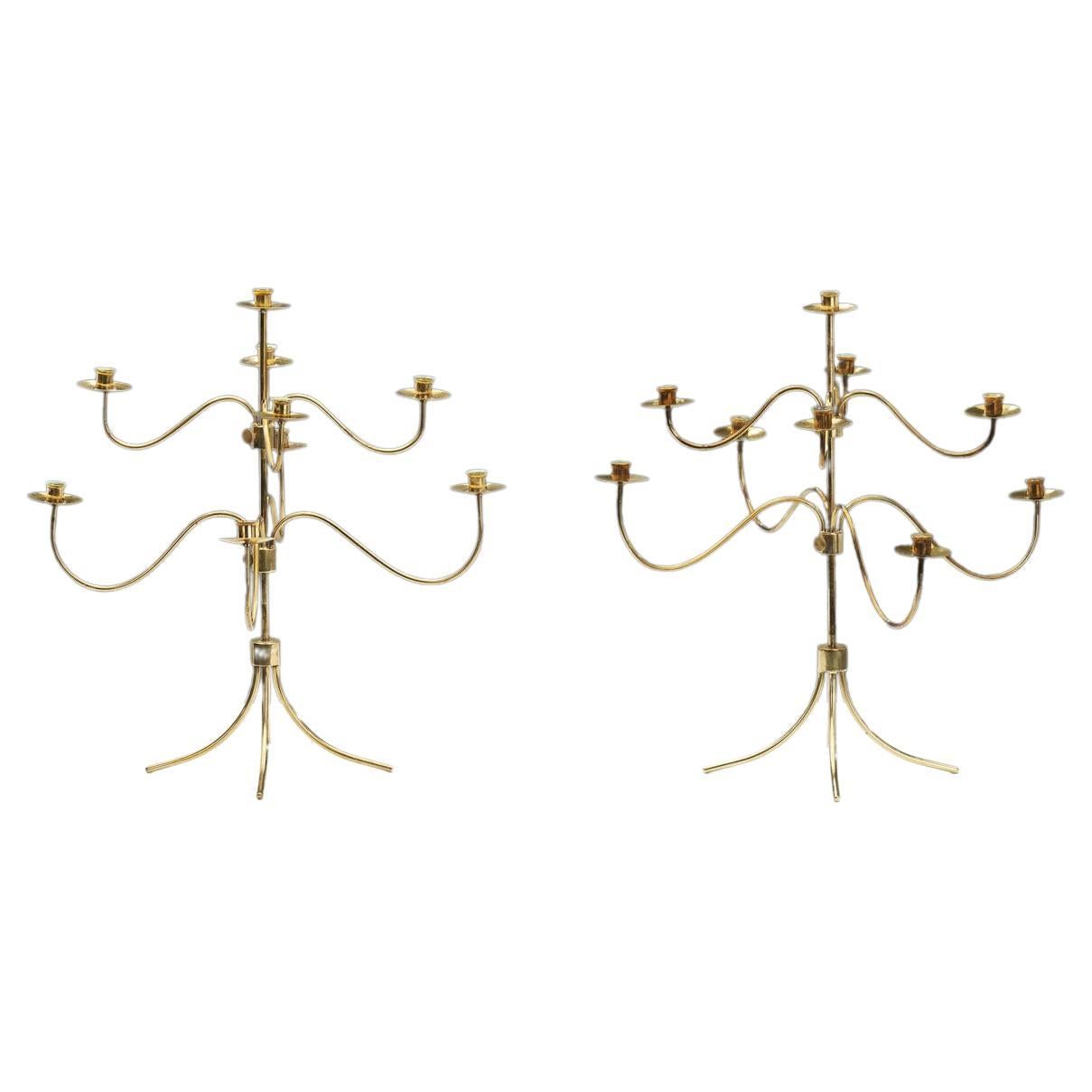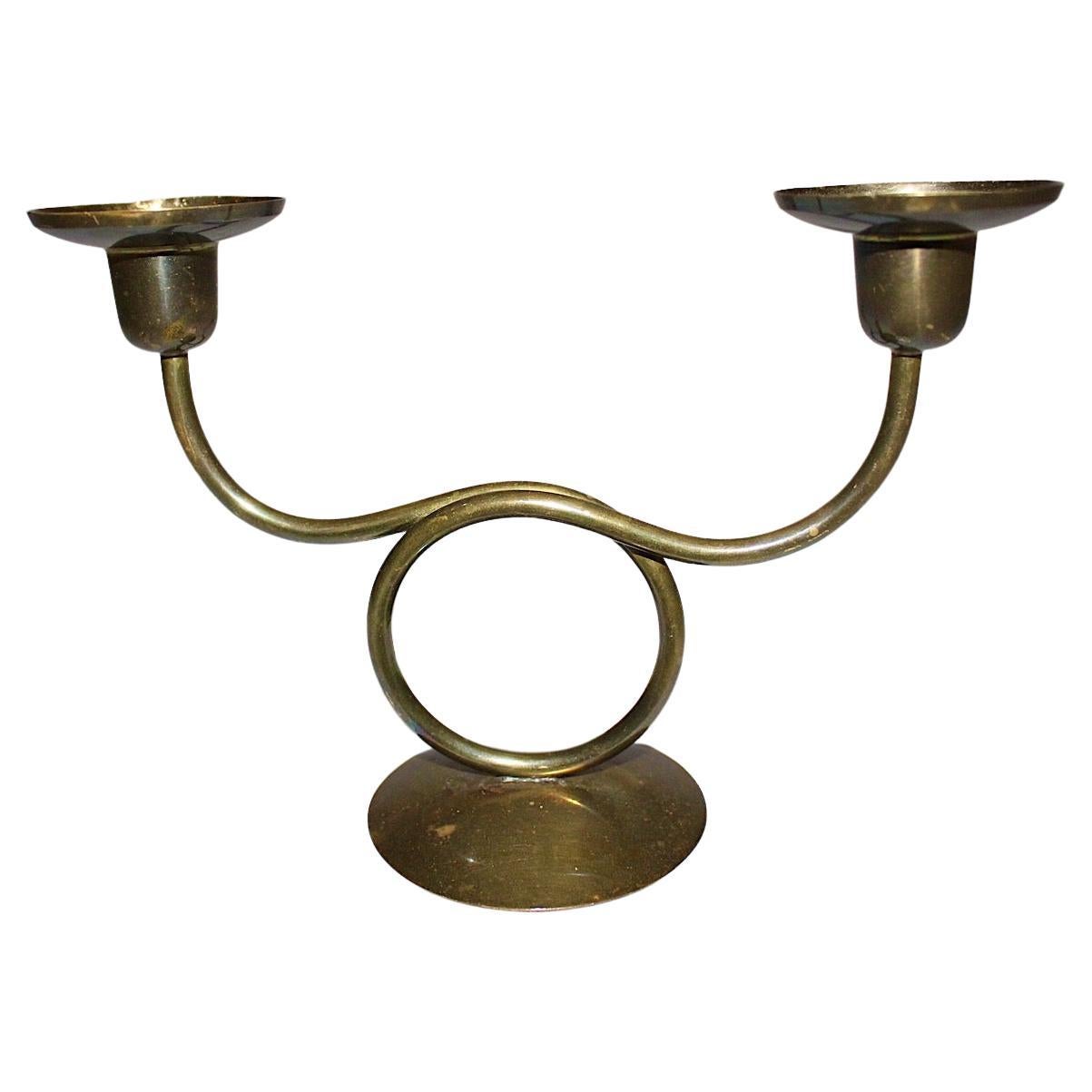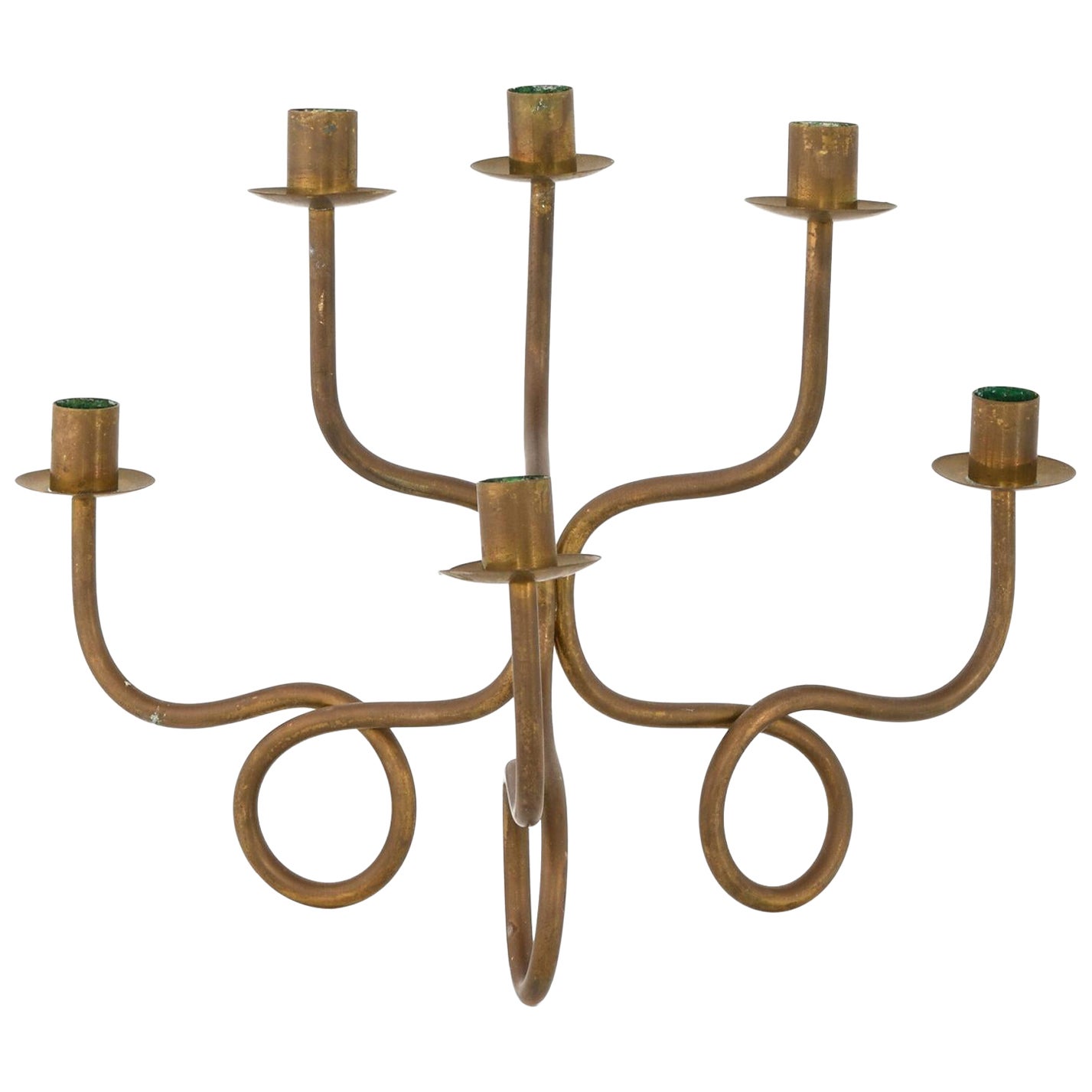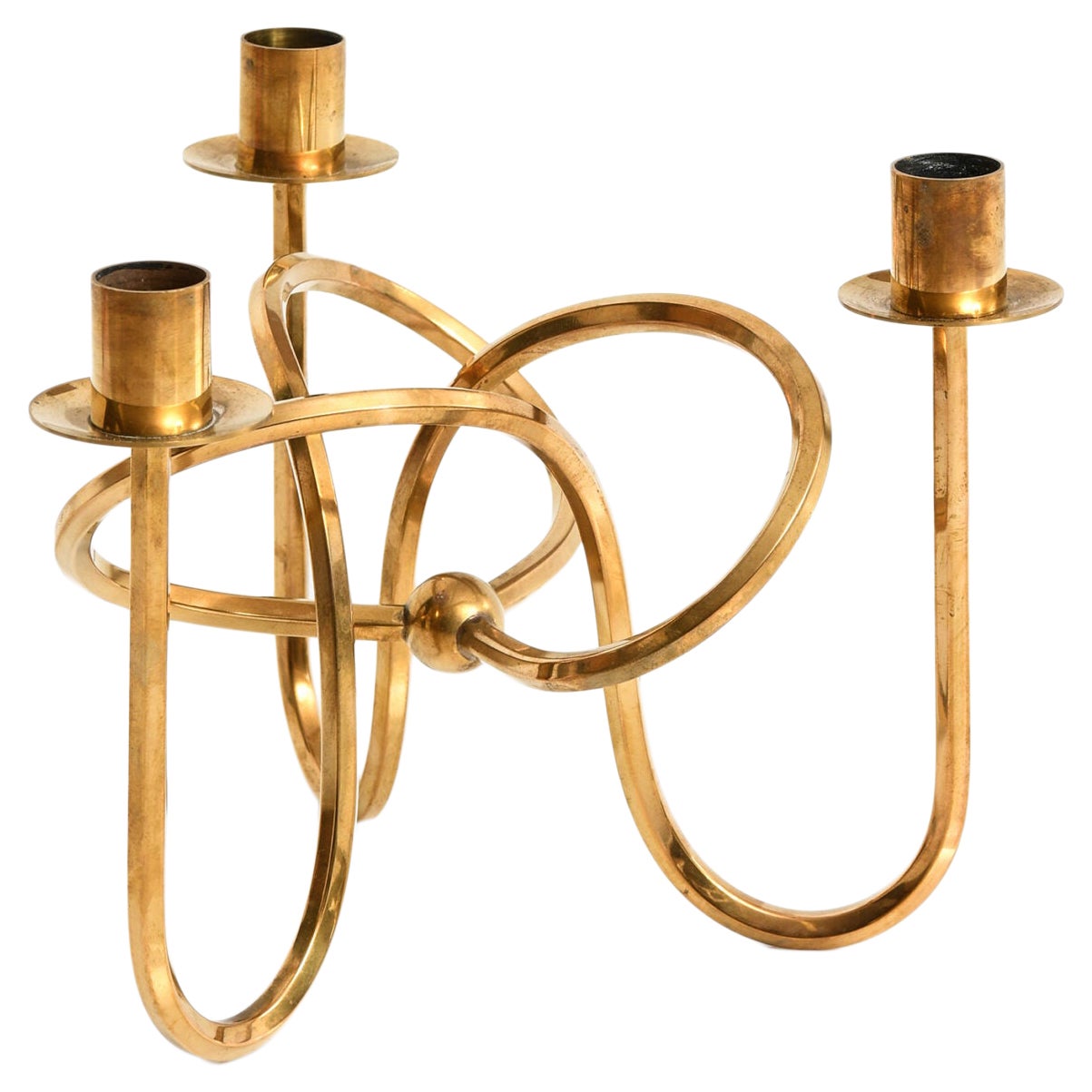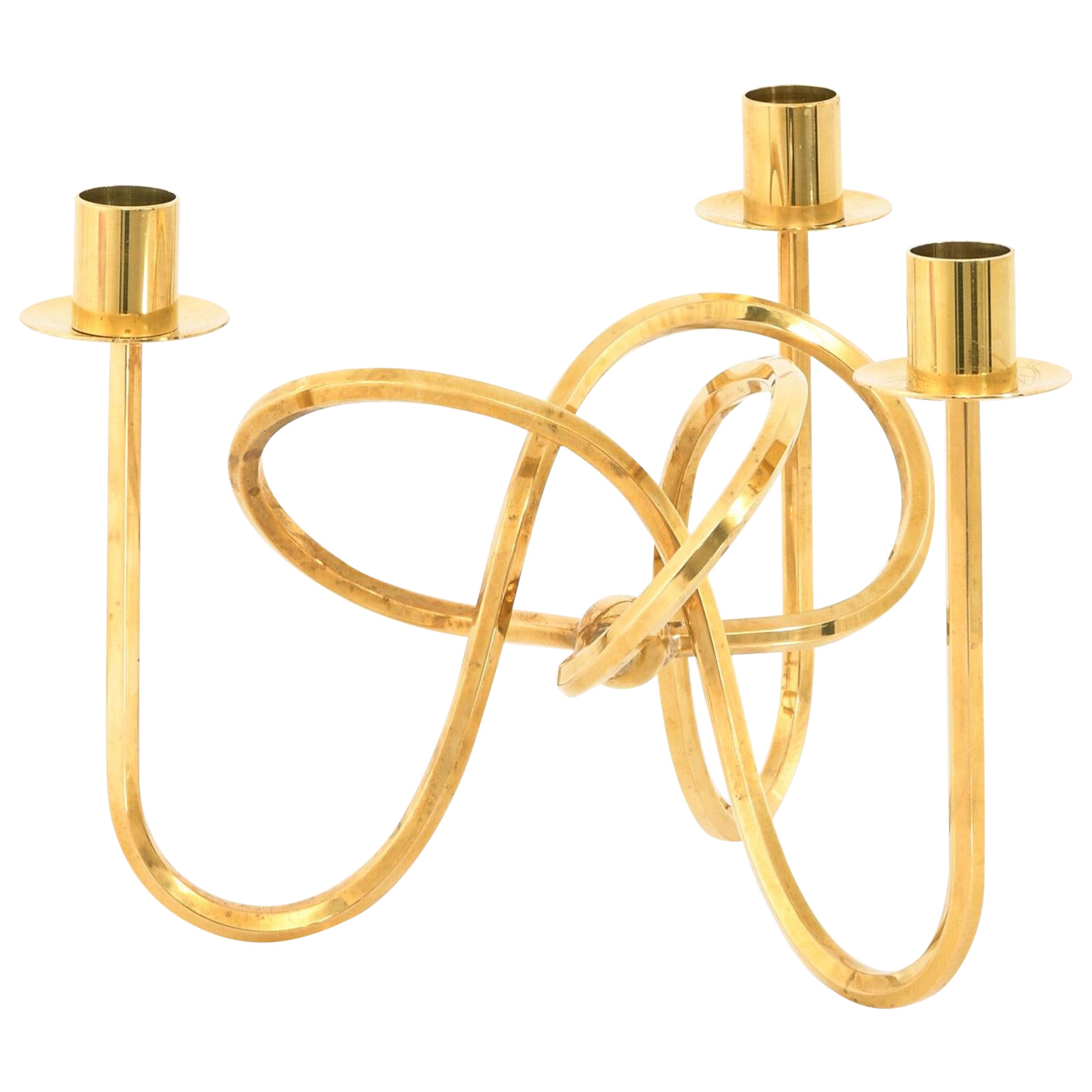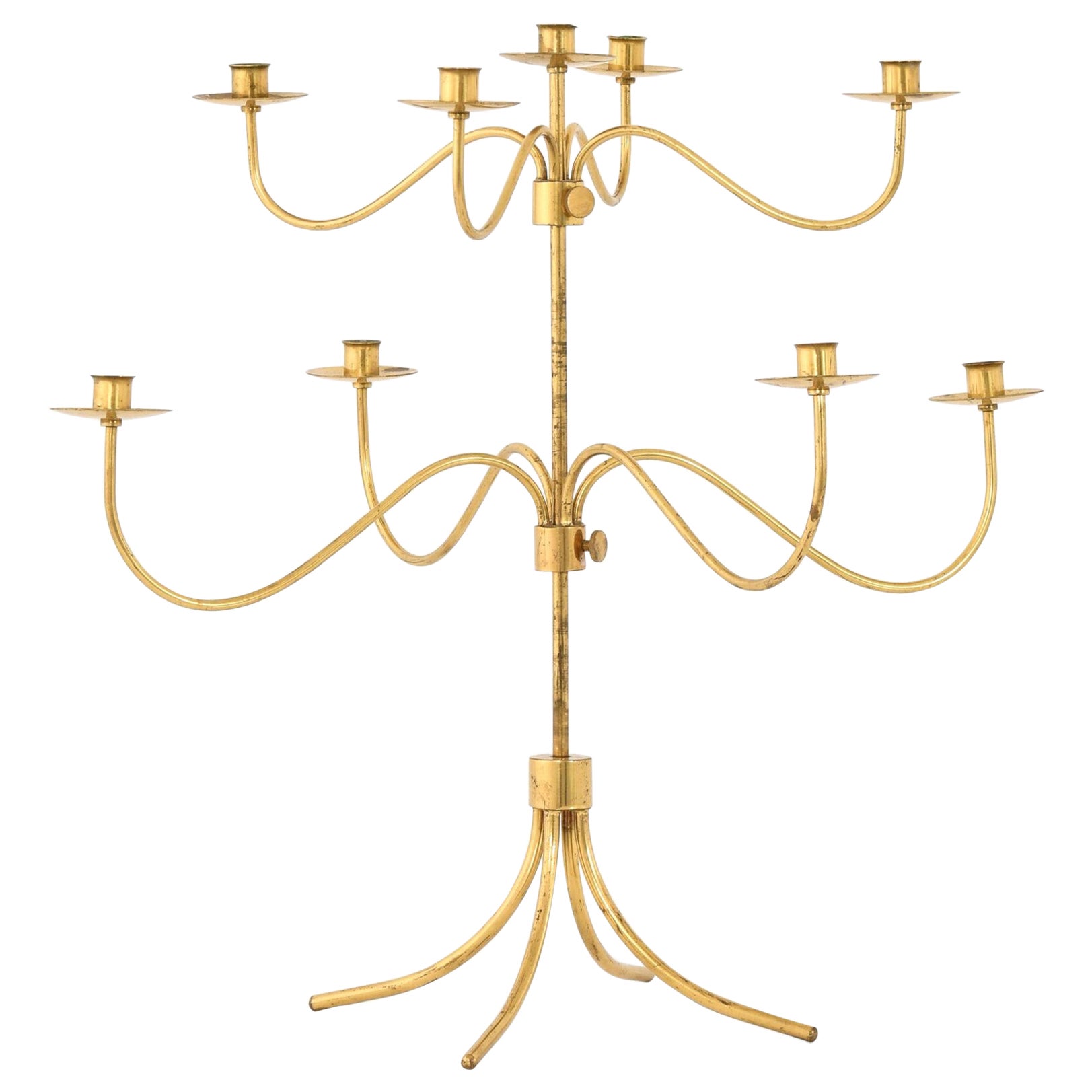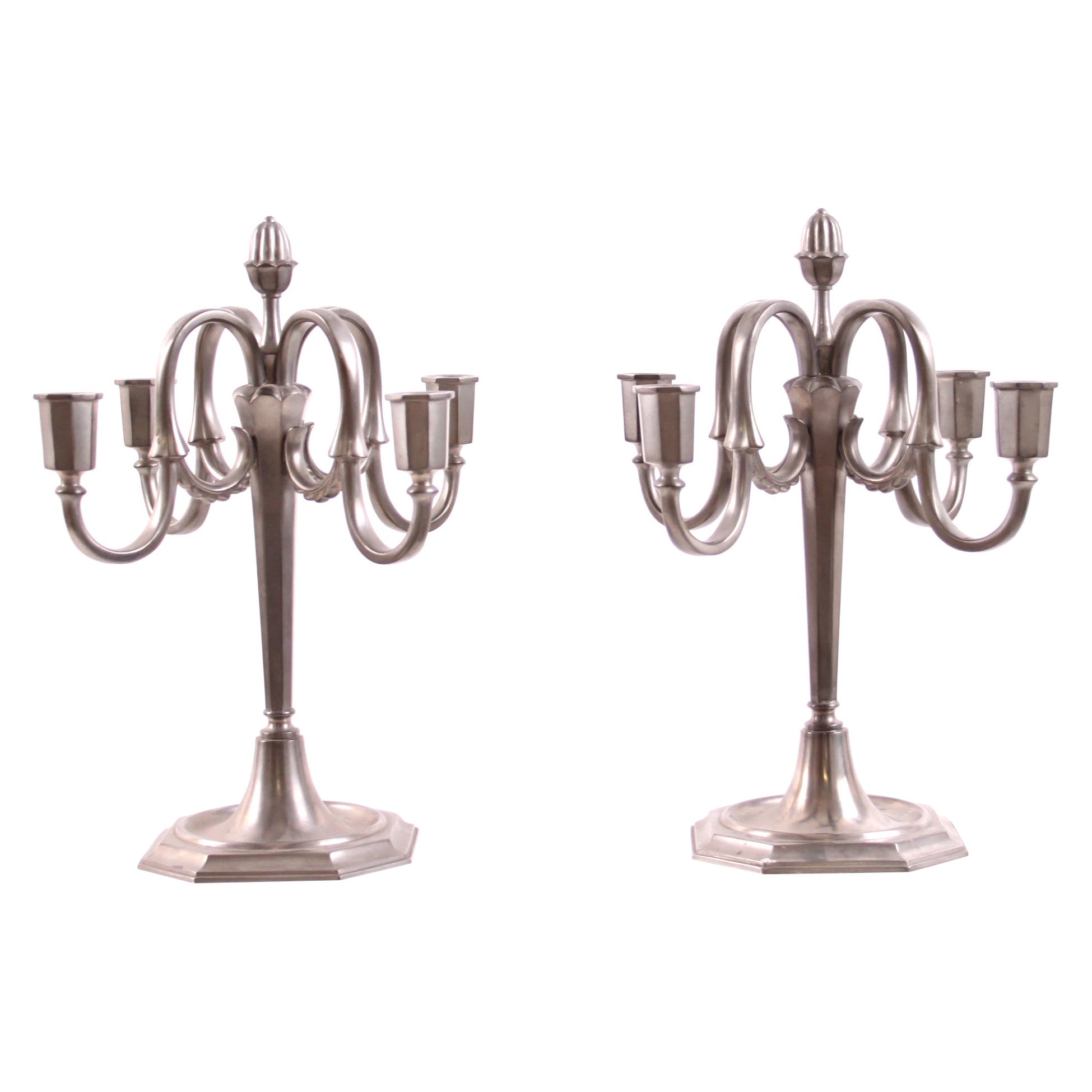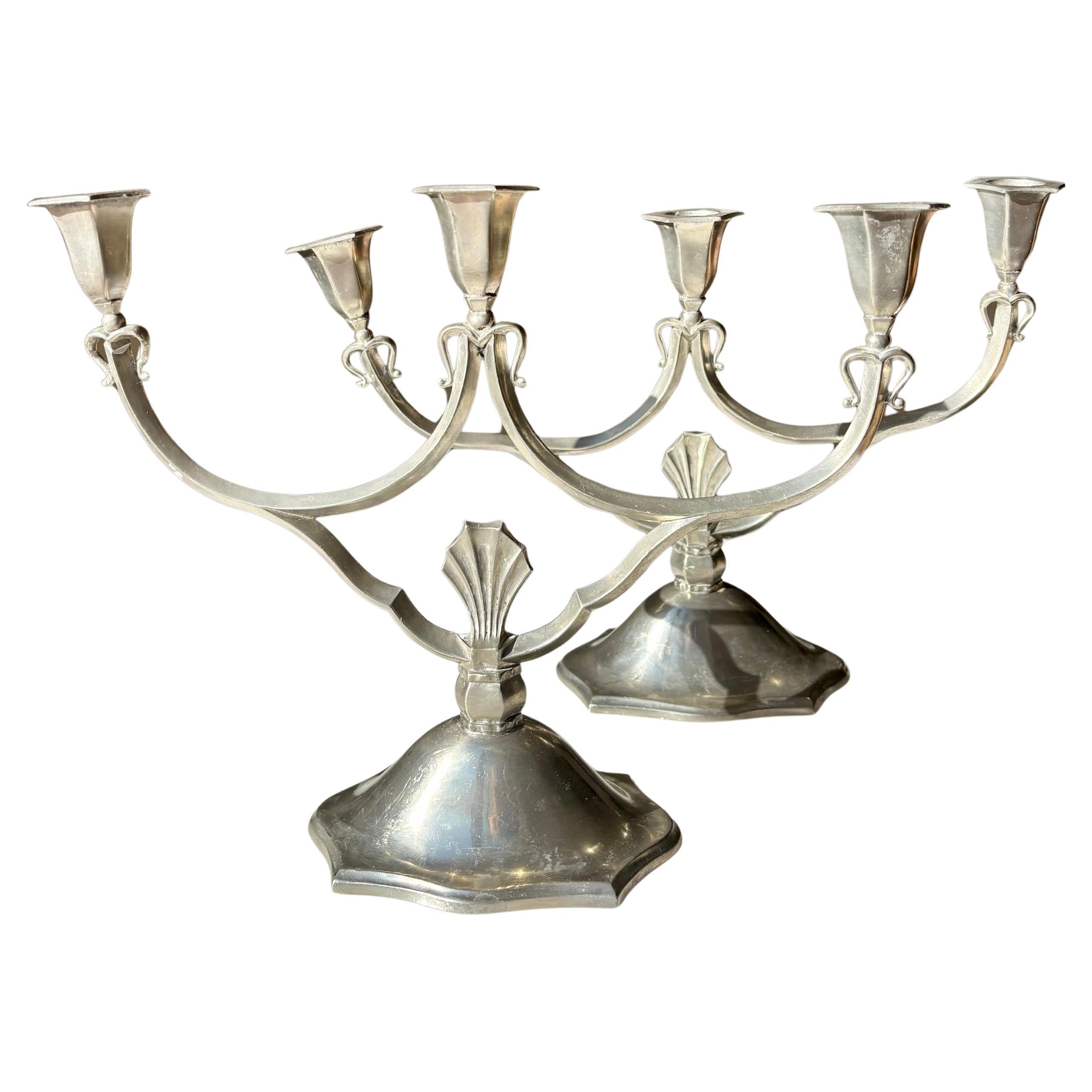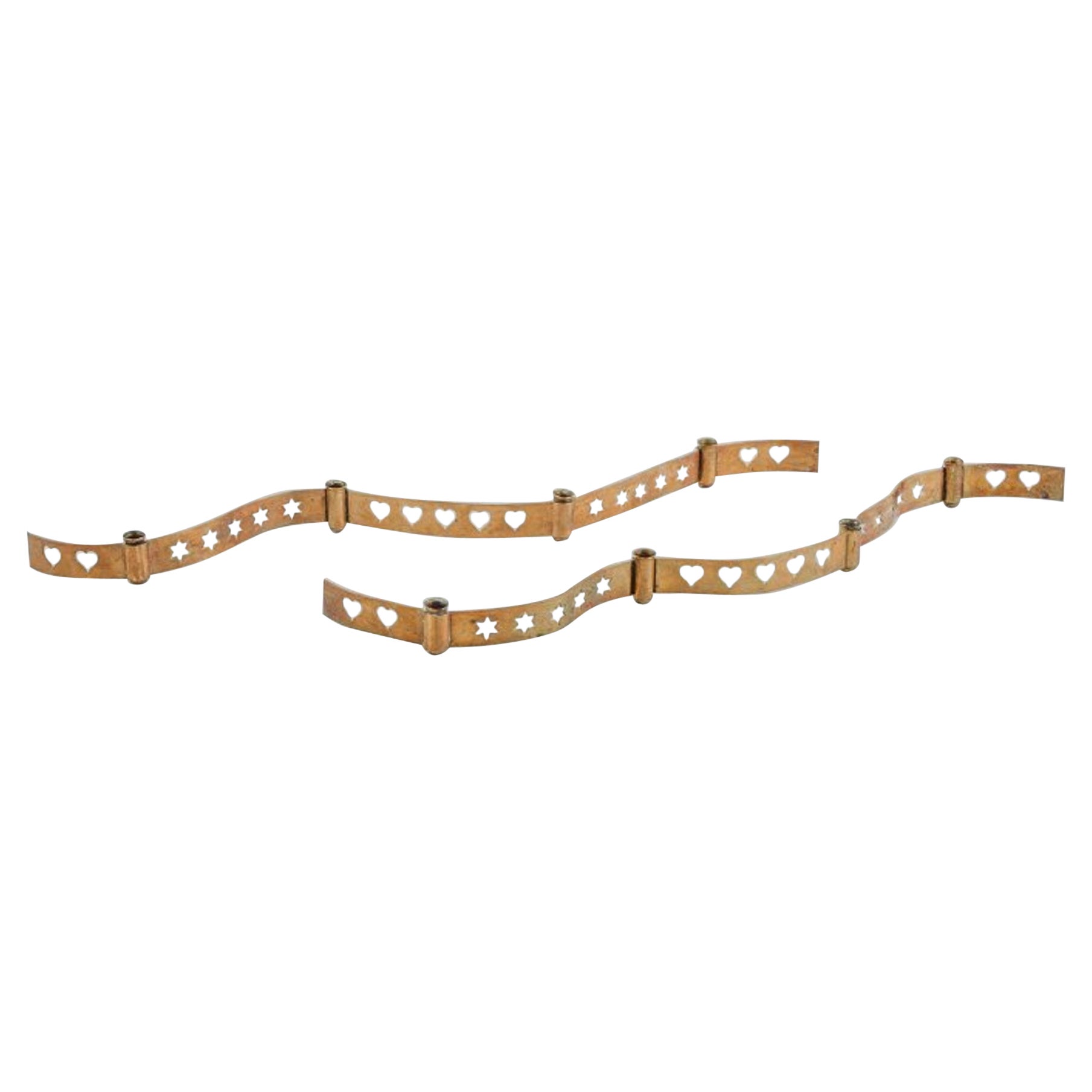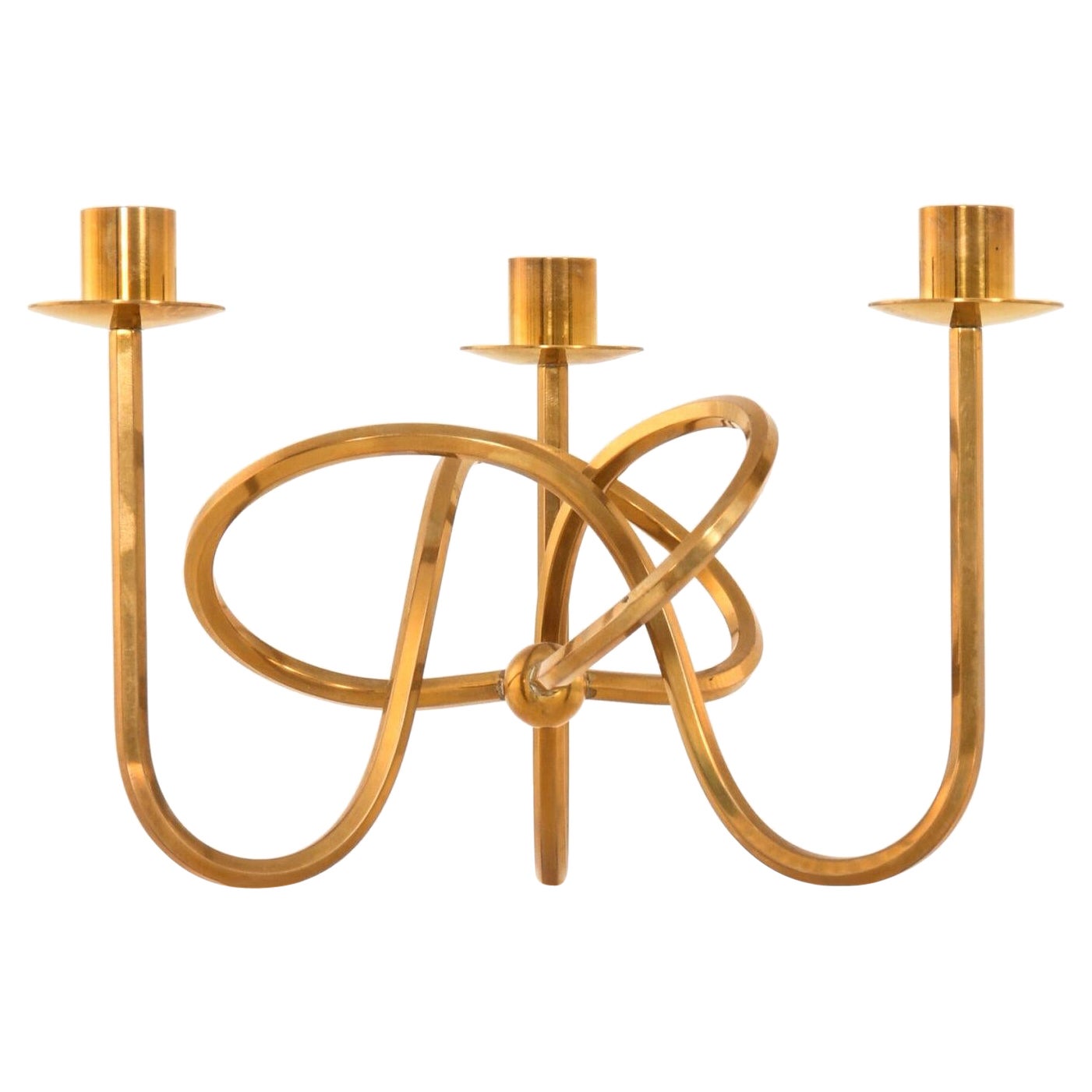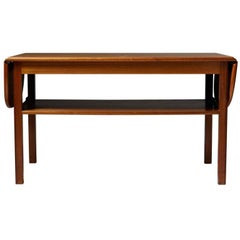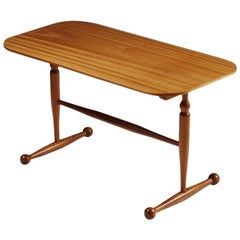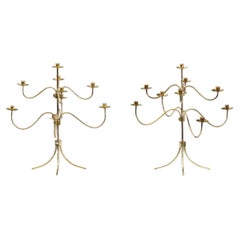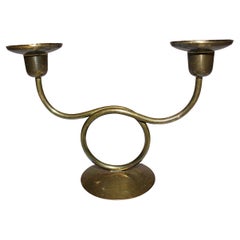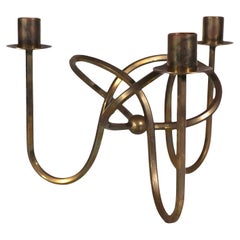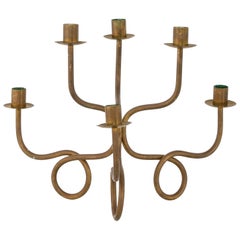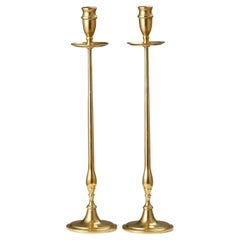
Pair of Candlesticks Designed for Svenskt Tenn, Sweden, 1950s
View Similar Items
Want more images or videos?
Request additional images or videos from the seller
1 of 6
Pair of Candlesticks Designed for Svenskt Tenn, Sweden, 1950s
About the Item
- Dimensions:Height: 15.75 in (40 cm)Diameter: 3.55 in (9 cm)
- Style:Mid-Century Modern (Of the Period)
- Materials and Techniques:
- Place of Origin:
- Period:
- Date of Manufacture:1950s
- Condition:
- Seller Location:Stockholm, SE
- Reference Number:1stDibs: LU1006634103602
About the Seller
5.0
Recognized Seller
These prestigious sellers are industry leaders and represent the highest echelon for item quality and design.
Established in 1998
1stDibs seller since 2013
197 sales on 1stDibs
Typical response time: 8 hours
Authenticity Guarantee
In the unlikely event there’s an issue with an item’s authenticity, contact us within 1 year for a full refund. DetailsMoney-Back Guarantee
If your item is not as described, is damaged in transit, or does not arrive, contact us within 7 days for a full refund. Details24-Hour Cancellation
You have a 24-hour grace period in which to reconsider your purchase, with no questions asked.Vetted Professional Sellers
Our world-class sellers must adhere to strict standards for service and quality, maintaining the integrity of our listings.Price-Match Guarantee
If you find that a seller listed the same item for a lower price elsewhere, we’ll match it.Trusted Global Delivery
Our best-in-class carrier network provides specialized shipping options worldwide, including custom delivery.More From This Seller
View AllTea Trolley, Anonymous, for Svenskt Tenn, Sweden, 1950s
Located in Stockholm, SE
Tea trolley, anonymous, for Svenskt Tenn,
Sweden, 1950s.
Metal.
Dimensions:
H: 63 cm / 2 3/4''
W: 76 cm / 2' 6''
D: 43 cm / 17''.
Category
Mid-20th Century Swedish Mid-Century Modern Tables
Materials
Metal
Occasional Table Designed by Josef Frank for Svenskt Tenn, Sweden, 1950s
By Josef Frank
Located in Stockholm, SE
Occasional table designed by Josef Frank for Svenskt Tenn,
Sweden, 1950s.
Mahogany.
Measurements:
H: 60 cm/ 23 1/2''
Length when extened: 104 cm/ 3' 5''
D: 54 cm/ 21 1/2''
Jose...
Category
Vintage 1950s Swedish Scandinavian Modern Side Tables
Materials
Mahogany
Occasional Table Designed by Josef Frank for Svenskt Tenn, Sweden, 1950s
By Josef Frank
Located in Stockholm, SE
Occasional table designed by Josef Frank for Svenskt Tenn,
Sweden. 1950s.
Mahogany.
H: 45 cm
L: 80 cm
D: 40 cm
Josef Frank was a true European, he was also a pioneer of what would become classic 20th century Swedish design and the “Scandinavian Design Style”.
Austrian- born Frank started his design career as an architect after having trained at the Technische Hochschule in Vienna between 1903 and 1910. After his training he went on to teach at Kunstgewerbeschule (The Viennese School of Arts and crafts) where he developed and espoused the new school of modernist thinking towards Architecture and Design that was coming to fruition in Vienna at the time. He also went on to lead the Vienna Werkbund throughout the 1920s. This was a truly progressive group of Architects and Designers who set about improving the daily lives of Austrian people through modernist design and architecture in partnership with Arts and Crafts ideals and construction. Frank’s leadership of the Werkbund had already cemented his place at the forefront of European design.
Frank’s time in Vienna was typified by his design for the “Die Wohnung” exhibition of the Deutscher Werkbund in Stuttgart, 1927 where he exhibited along side his contemporaries at the forefront of design, such as the likes of Le Corbusier and Walter Gropius. Here he showed a specially designed pair of flat-roofed reinforced concrete houses in what is now seen as a typical modernist style.
What separated Frank’s house from the other 32 houses of the exhibition was the interior and furniture inside the building. It was described as “Neo-Classical” and filled with an eclectic mix of period pieces, modern design and pieces designed by Frank himself that seemed to cross the two worlds. This was a complete opposite direction to that which his fellow Architects were travelling in with their pared back and angular aesthetics. Frank said of his own work: “The house is not a work of art, simply a place where one lives,” and by this reasoning Frank rejected the regimental mechanisation of the living space that his contemporaries believed in, instead he set about creating congenial and spontaneous interiors. Frank’s practice saw him placing the bright colours and the soft forms of nature back into the furnishings and interiors that he thought modernism sorely mist.
Frank, along with Oskar Walch set up Haus und Garten in Vienna in 1925. This was Frank’s first commercial foray into furniture and home furnishings and the company went on to become the most influential furnishing house in Vienna with a riotous depth of colour and interesting shapes becoming the trademark of their design. However this success was to come to an end with rise of Nazism in Vienna in the early 1930’s. Frank was Jewish, and he and his wife Anna decided they would leave Vienna for her motherland: Sweden, in 1933. Frank continued to design for Haus and Garten, visiting Vienna occasionally and designing the pieces that would continue to be the company’s best...
Category
Vintage 1950s Swedish Scandinavian Modern Tables
Materials
Mahogany
Sideboard Model 1148 Designed by Josef Frank for Svenskt Tenn, Sweden, 1950s
By Josef Frank
Located in Stockholm, SE
Sideboard model 1148 designed by Josef Frank for Svenskt Tenn,
Sweden, 1950s.
Walnut and alder root veneer.
This sideboard model 1148 with two clever extension flaps was designed b...
Category
Mid-20th Century Swedish Mid-Century Modern Sideboards
Materials
Walnut
Bedside Table Model 914 Designed by Josef Frank for Svenskt Tenn, Sweden, 1950s
By Josef Frank
Located in Stockholm, SE
Bedside table model 914 designed by Josef Frank for Svenskt Tenn,
Sweden, 1950s.
Mahogany veneer and brass handle.
Josef Frank’s elegant bedside table model 914 with sophisticated brass handles is one of Svenskt Tenn’s timeless classics. It works very well combined with modern or antique pieces. The overall simplicity of form and use of luxurious wood are characteristic of Josef Frank.
L: 65 cm
W: 40 cm
H: 55 cm
Josef Frank was a true European, he was also a pioneer of what would become classic 20th century Swedish design and the “Scandinavian Design Style”.
Austrian- born Frank started his design career as an architect after having trained at the Technische Hochschule in Vienna between 1903 and 1910. After his training he went on to teach at Kunstgewerbeschule (The Viennese School of Arts and crafts) where he developed and espoused the new school of modernist thinking towards Architecture and Design that was coming to fruition in Vienna at the time. He also went on to lead the Vienna Werkbund throughout the 1920s. This was a truly progressive group of Architects and Designers who set about improving the daily lives of Austrian people through modernist design and architecture in partnership with Arts and Crafts ideals and construction. Frank’s leadership of the Werkbund had already cemented his place at the forefront of European design.
Frank’s time in Vienna was typified by his design for the “Die Wohnung” exhibition of the Deutscher Werkbund in Stuttgart, 1927 where he exhibited along side his contemporaries at the forefront of design, such as the likes of Le Corbusier and Walter Gropius. Here he showed a specially designed pair of flat-roofed reinforced concrete houses in what is now seen as a typical modernist style.
What separated Frank’s house from the other 32 houses of the exhibition was the interior and furniture inside the building. It was described as “Neo-Classical” and filled with an eclectic mix of period pieces, modern design and pieces designed by Frank himself that seemed to cross the two worlds. This was a complete opposite direction to that which his fellow Architects were travelling in with their pared back and angular aesthetics. Frank said of his own work: “The house is not a work of art, simply a place where one lives,” and by this reasoning Frank rejected the regimental mechanisation of the living space that his contemporaries believed in, instead he set about creating congenial and spontaneous interiors. Frank’s practice saw him placing the bright colours and the soft forms of nature back into the furnishings and interiors that he thought modernism sorely mist.
Frank, along with Oskar Walch set up Haus und Garten in Vienna in 1925. This was Frank’s first commercial foray into furniture and home furnishings and the company went on to become the most influential furnishing house in Vienna with a riotous depth of colour and interesting shapes becoming the trademark of their design. However this success was to come to an end with rise of Nazism in Vienna in the early 1930’s. Frank was Jewish, and he and his wife Anna decided they would leave Vienna for her motherland: Sweden, in 1933. Frank continued to design for Haus and Garten, visiting Vienna occasionally and designing the pieces that would continue to be the company’s best...
Category
Vintage 1950s Swedish Mid-Century Modern Side Tables
Materials
Brass
Floor Lamp Model 2564 Designed by Josef Frank for Svenskt Tenn, Sweden, 1950s
By Josef Frank
Located in Stockholm, SE
Floor lamp model 2564 designed by Josef Frank for Svenskt Tenn,
Sweden, 1950s.
White lacquered brass and Lacquered Paper.
Stamped.
This elegant brass floor lamp is adjustable in h...
Category
Mid-20th Century Swedish Mid-Century Modern Floor Lamps
Materials
Brass
You May Also Like
Josef Frank Brass Adjustable Candelabra for Svenskt Tenn, Sweden 1950s
By Josef Frank, Svenskt Tenn
Located in Utrecht, NL
Although electricity has relegated candleholders to decorative use, interior designers continue to favour candelabra for their cosy light and eye-catching appearance. Josef Frank modernized the classic...
Category
Vintage 1950s Swedish Mid-Century Modern Candelabras
Materials
Brass
Mid Century Modern Vintage Brass Candlesticks Josef Frank Svenskt Tenn 1950s
By Svenskt Tenn, Josef Frank
Located in Vienna, AT
Mid Century Modern vintage candlesticks or candleholder attributed to Josef Frank for Svenskt Tenn 1950s Sweden from brass.
An amazing candlestick from brass with curved circular li...
Category
Late 20th Century Swedish Mid-Century Modern Candlesticks
Materials
Brass
Three Light Candlestick by Josef Frank for Svenskt Tenn Sweden c 1930's
By Josef Frank, Svenskt Tenn
Located in New York, NY
Iconic Scandinavian Modern design brass candlestick designed by Josef Frank for Svenskt Tenn, made in Sweden circa 1930's. Quintessential Northern European Modern, Art Deco period ob...
Category
Vintage 1930s American Art Deco Candlesticks
Materials
Brass
Josef Frank Candlestick Produced by Svenskt Tenn in Sweden
By Josef Frank
Located in Limhamn, Skåne län
Rare and early candlestick designed by Josef Frank. Produced by Svenskt Tenn in Sweden.
Category
Vintage 1950s Swedish Scandinavian Modern Candlesticks
Materials
Brass
Josef Frank Candlestick Produced by Svenskt Tenn in Sweden
By Josef Frank
Located in Limhamn, Skåne län
Candlestick (the knot of friendship) in brass designed by Josef Frank. Produced by Svenskt Tenn in Sweden.
Category
Vintage 1930s Swedish Scandinavian Modern Candlesticks
Materials
Brass
Josef Frank Candlestick Produced by Svenskt Tenn in Sweden
By Josef Frank
Located in Limhamn, Skåne län
Candlestick (the knot of friendship) in brass designed by Josef Frank. Produced by Svenskt Tenn in Sweden.
Category
Vintage 1930s Swedish Scandinavian Modern Candlesticks
Materials
Brass
Recently Viewed
View AllMore Ways To Browse
Svenskt Tenn Pair
Kosta Boda Sunflower
Kosta Sunflower
Peerage Brass
Pineapple Candlesticks
Polar Kosta Boda
Regence Candlesticks
Seashell Candle Holders
Sphinx Candlesticks
Spiked Bronze Candlestick
Val St Lambert Candle
Wmf Candle Brass
Antique Monkey Candlesticks
Bjorn Wiinblad Brass
Brass Candle Holder Nautical
Crane Candle Holders
Foo Dog Candlestick
Goran Warff Sunflower
